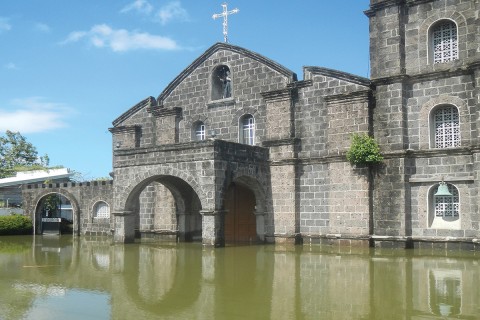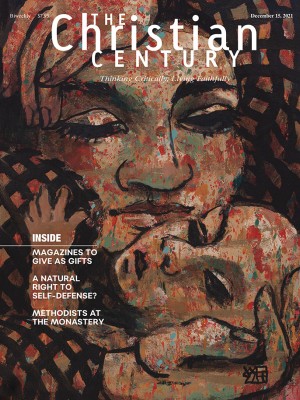Climate change’s threat to Christianity
Faith is growing in the tropics. So are the temperatures and the tides.

In 2015, Pope Francis issued the landmark encyclical Laudato si’, a powerful warning about environmental threats of all kinds. The document highlights global warming as “one of the principal challenges facing humanity in our day.” Such a statement appears daily more obvious, as do the global implications for all peoples and all races. What we perhaps miss is how central that threat is to the Christian future in particular, in an age when Christianity has become in large measure a religion of the tropics.
By midcentury, higher temperatures will mean rising sea levels and spreading deserts, as well as falling supplies of food and drinkable water. As the seas rise, fresh water becomes salinated and ever-larger areas of the world become subject to water stress. Even projecting a temperature increase of 1.5 degrees Celsius (which is optimistic) would double the frequency of extreme El Niñ̃o events. Changes in rainy seasons compound the effects of higher temperatures on agricultural productivity, which would be further threatened by extreme and unpredictable weather patterns. Facing the loss of fertile lands, we become wearily accustomed to the technical language of aridization and its most extreme form, desertification.
Read our latest issue or browse back issues.
In terms of the direct effects on human populations, warming will have its most extensive impact on the tropics, the very populous areas between the latitudes of roughly 23 degrees north of the equator and 23 degrees south. That region includes most of Africa and Southeast Asia and large portions of India and Latin America. Within a few decades, 1 billion to 3 billion people in the tropics will find themselves in conditions too warm for comfortable survival. They will be outside the ecological niche in which most humans have survived for the past few millennia.
The word tropical will become ever more familiar in our vocabulary of global problems. Presently, the word is commonly associated with dreams of exotic tourism; it’s used to sell clothing and drinks. But used according to strict geographical criteria, the term is valuable in demarcating the harshest effects of the climate crisis. When policy makers forecast the future prospects of particular nations in any context, they need to begin with a basic geographical question: What is its latitude? They must distinguish carefully between the temperate zones—those areas between the tropics and the polar circles—and the tropical. Temperate countries are by no means immune from climate disaster, but they are not nearly as endangered as the tropical nations.
That geographical sketch is also a fundamental religious reality. When we seek the regions where Christian numbers are most thriving and growth is most explosive, we are looking at tropical lands. Nigeria, for instance, is located between 4 and 14 degrees north of the equator. Uganda lies between the equator and 5 degrees north; the Philippines are between 5 and 20 degrees north; Brazil stretches from the equator to 30 degrees south. Roman Catholic numbers are ever more concentrated within the tropics, in nations such as Brazil and the Philippines and, above all, in such Black African nations as Uganda, Tanzania, and the Democratic Republic of the Congo. Christianity remains a global faith, but its heart will increasingly be found in those endangered tropics, within those latitudes of faith.
Quite apart from environmental threats to health and well-being, these tropical believers also face acute political dangers. As we know from multiple historical precedents, economic crises and resource conflicts often result in the scapegoating of rival ethnic or religious groups, if not by states then by mobs and militias. The tropical regions that stand to lose most directly from global warming include the world’s most fragile states, those with a high potential for state breakdown or failure and for communal conflict. In demographic terms, states in these regions also have by far the youngest and fastest-growing populations, with the characteristic “youth bulges” that so often portend political turmoil.
Nor is such a linkage between environmental catastrophe and religious struggle merely hypothetical. Scholars have shown a strong correlation between severe El Niñ̃o events and outbreaks of revolution and civil war within tropical nations around the world. Between the 1970s and 1990s, major El Niñ̃o events had disastrous impacts on Central America, Central Africa, and Southeast Asia. In each case, the resulting struggles drove mass migrations and refugee movements. Other events have also had an impact. The cataclysmic civil war that has ruined Syria over the past decade is incomprehensible except in the context of the historic drought that afflicted the Levant at the start of this century. That drought drove vast numbers into the cities and hugely aggravated tensions between different communities and faith groups.
Now imagine such trends, frequent and amplified, as the near future of tropical lands. That is likely to be the world’s religious future—the Christian future—as well as its environmental fate.
A version of this article appears in the print edition under the title “Trouble in the tropics.”






